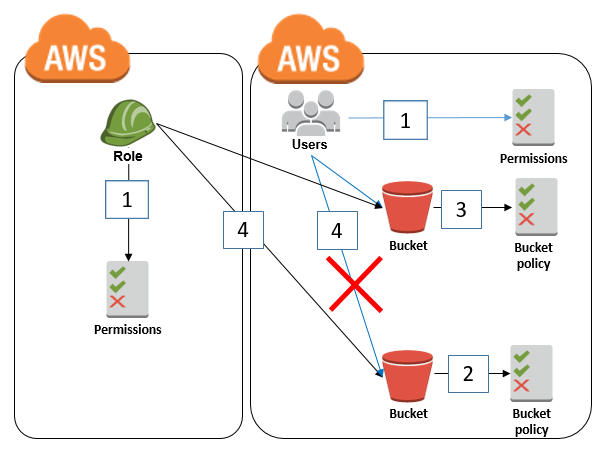AWS Security Blog
Category: How-To
How to help prevent hotlinking using referer checking, AWS WAF, and Amazon CloudFront
Note: This post was first published April 21, 2016. The updated version aligns with the latest version of AWS WAF (AWS WAF v2) and includes screenshots that reflect the changes in the AWS console experience. AWS WAF Classic has been deprecated and will be end-of-life (EOL) in September 2025. This update describes how to use […]
How to restrict Amazon S3 bucket access to a specific IAM role
February 14, 2025: This post was updated with the recommendation to restrict S3 bucket access to an IAM role by using the aws:PrincipalArn condition key instead of the aws:userid condition key. April 2, 2021: In the section “Granting cross-account bucket access to a specific IAM role,” we updated the second policy to fix an error. […]
How to Connect Your On-Premises Active Directory to AWS Using AD Connector
August 17, 2023: We updated the instructions and screenshots in this post to align with changes to the AWS Management Console. April 25, 2023: We’ve updated this blog post to include more security learning resources. AD Connector is designed to give you an easy way to establish a trusted relationship between your Active Directory and […]
How to receive alerts when your IAM configuration changes
June 12, 2024: Update: This post has been updated to deploy the solution in the North Virginia (us-east-1) AWS Region. August 21, 2023: This post had been updated to change from wildcard pattern matching to using “prefixes” for EventBridge pattern rules. July 27, 2023: This post was originally published February 5, 2015, and received a […]
How to Automatically Revert and Receive Notifications About Changes to Your Amazon VPC Security Groups
In a previous AWS Security Blog post, Jeff Levine showed how you can monitor changes to your Amazon EC2 security groups. The methods he describes in that post are examples of detective controls, which can help you determine when changes are made to security controls on your AWS resources. In this post, I take that […]
Register for and Attend this September 28 Tech Talk: “How to Use AWS WAF to Mitigate OWASP Top 10 Attacks”
October 1, 2017, update: This webinar is now available as an on-demand video and slide deck. As part of the AWS Online Tech Talks series, AWS will present How to Use AWS WAF to Mitigate OWASP Top 10 Attacks on Thursday, September 28. This tech talk will start at 9:00 A.M. Pacific Time and end at […]
How to enable server-side LDAPS for your AWS Managed Microsoft AD directory
September 16, 2025: AWS Private CA Connector for Active Directory now supports server-side LDAPS certificate enrollment for AWS Managed Microsoft AD domain controllers. To learn how to enable server-side LDAPS for your AWS Managed Microsoft AD directory using AWS Private CA Connector for Active Directory, please refer to our updated documentation. March 18, 2024: We […]
How to Query Personally Identifiable Information with Amazon Macie
June 15, 2020: This blog is out of date. Please refer here for the updated info: https://aws.amazon.com/blogs/aws/new-enhanced-amazon-macie-now-available/ In August 2017 at the AWS Summit New York, AWS launched a new security and compliance service called Amazon Macie. Macie uses machine learning to automatically discover, classify, and protect sensitive data in AWS. In this blog post, […]
How to Enable Your Users to Access Office 365 with AWS Managed Microsoft AD
January 18, 2023: We fixed a capitalization issue in a url that was preventing ADFS from authenticating properly in most browers. December 12, 2019: A customer reported that the architecture diagrams had a typo in it, and so we replaced the two diagrams to address the problem. You can now enable your users to access […]
How to Configure an LDAPS Endpoint for Simple AD
September 9, 2020: There’s an updated version of this blog here – https://aws.amazon.com/blogs/security/how-to-configure-ldaps-endpoint-for-simple-ad/. Simple AD, which is powered by Samba 4, supports basic Active Directory (AD) authentication features such as users, groups, and https://aws.amazon.com/blogs/security/how-to-configure-ldaps-endpoint-for-simple-ad/the ability to join domains. Simple AD also includes an integrated Lightweight Directory Access Protocol (LDAP) server. LDAP is a standard application […]









